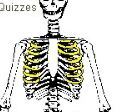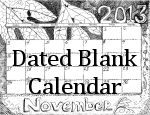Guide Words
About This Page
This page explains a way to introduce to a child how to find words in the dictionary. It is a short lesson that should be repeated as often as necessary because this is an important skill. The child needs to master this skill.
Lessons: Guide Words
Introduce the Dictionary
Introduce Guide Words
Printable Cards Activity
Printable Houses Activity
Prerequisite to Using the Lessons
The child should have mastered arranging words in alphabetical order up to the second letter. Prior to that, make sure that you use a dictionary in front of your young children so that the dictionary is familiar to them.
Age Level - Skills
I have no solid age level recommendation. Instead, follow the trail of skills that your children have presently. Skills listed in order below:
- Can recite the alphabet
- Can arrange letters in alphabetical order
- Can read
- Can place words in alphabetical order up to 2nd word
- Can use the lessons on this page
Lessons
Introducing The Dictionary
By the time your child has mastered alphabetizing to the second letter, you should bring the dictionary into some of your weekly lessons. It is not necessary to buy a children's dictionary for this, alternately, it does not hurt to use one either. You might already have a good dictionary at your home. If you do not have a good dictionary then get one. The dictionary can be either paperback or hardback. If you have the means, try to get a paperback dictionary for each child. (Tip: When choosing a paperback dictionary, open it and look at the print to make sure that it is printed well instead of having smudgy letters.)
You should go over the parts of the dictionary every time you use it for the first 5 or 6 times. At the start of each year, you might need to reintroduce the parts of the dictionary to young children. The parts vary by dictionary, however, the standard parts are the pronunciation guide, the word mark-up (where the word is separated into syllables and marked-up with pronunciation marks), and the grammar abbreviations for the words and what it all means.
One Way to Introduce the Dictionary
Start by having the child open the dictionary in the middle and be sure to say, "Open your dictionary in the middle." Ask him what letter the words begin with on the page that he opened. Have him close the book and open it several times in the middle of the book. This is just to show him that he does not start at the beginning of the dictionary to find a word that starts with T. Other times have him open the dictionary in the front or near the back and do the same "What letter does the words begin with" each time.
Ask him to find the words that begin with k (or whichever letter is just before the ones in the middle of his dictionary). Watch how quickly he finds the section and if he has trouble, keep doing this letter-section-finding for several days until he understands how to find the section for any of the letters. For instance, if you ask him to find v words, he should start near the back of the dictionary instead of the front or the middle.
Introducing Guide Words
Once your child has opened his dictionary lots of times and can find words from any letter in the alphabet it is time to explain guide words.
Have your child to open his dictionary on any page near the middle. Ask him if there are two words on the very top of the page. If your child can find these words, tell him what they are, if he can't show him the words and tell him that they are guide words. Tell him that guide words. tell the first word and the last word on that page (or two page spread, some dictionaries differ) and that the words on the page will be in between the guide words. in alphabetical order. The guide words. are there to help them locate the words quickly.
*Guide words can be very confusing to a child. Be patient and, when needed, explain what they are during each lesson that you teach about guide words.
Sit down with your children and with a dictionary and show the children the guide words. Point them out and tell your child that the guide words tell the first word and the last word on each page (or two page spread, some dictionaries differ). Tell them that the words on the page will be in between the guide words and in alphabetical order. The purpose of the guide words is to help them find a word more quickly.
The guide words are red in the example below. The first and last
words are highlighted in yellow
Example of Two Dictionary Pages
|
Using a dictionary, have the children find any word, this does not have to be a specific word. Then have the children tell you what the guide words. are on that page. Ask the children to put the two guide words and the word they found in alphabetical order.
For example: (What you might say is in red)
- Find a word in your dictionary.
- The child finds the word brain.
- What are the guide words on that page?
- Child says: braid and bread.
- Please put brain, braid and bread in alphabetical order.
- Child does.
- Tell me the words in alphabetical order
- Child says: braid, brain, and bread.
You can continue this by explaining that all of the words on the braid/bread page will fall in between the two guide words, but I have always found that this is a confusing concept to the child at first.
NEXT- The Guide Words Printable Activities 
After, or Along With, Teaching Dictionary Skills
Introduce the following: How to use the Encyclopedia if you have one, How to use the Thesaurus, and How to use the Telephone Book.
Using the Thesaurus to Refine Vocabulary
- Who Needs an Illustration, Sentence Building Activity One
- Who Needs an Illustration, Sentence Building Activity Two
- How to Make the 32-Page Word Book
- Studying Words without Workbooks
Hello Visitor!
I am currently working on this website to add to its ginormousness. Thank you for visiting, and please subscribe yearly to access my many printable files! Donna Young
May 13, 2021


 Skeleton - in Life Science
Skeleton - in Life Science Fact Family worksheets
Fact Family worksheets


